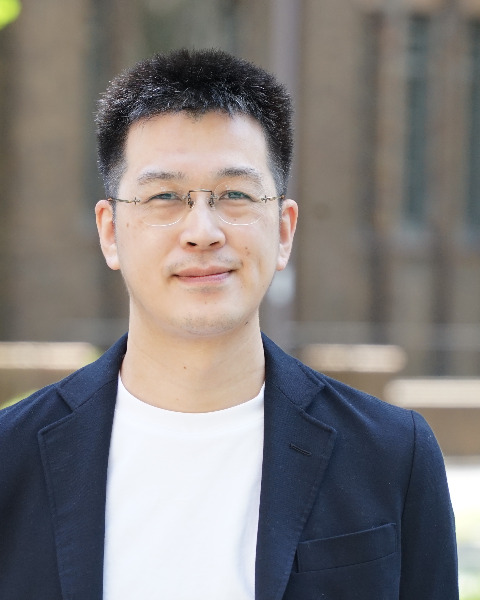Assisted Repro. Technologies
Poster Session B
(P-021) Reprogramming Conditions for Induced Pluripotent Stem Cells using Immortalized Mink Cells
Thursday, July 18, 2024
8:00 AM - 9:45 AM IST
Room: The Forum

Wataru Fujii, PhD (he/him/his)
Assistant Professor
Graduate school of Agricultural and Life Sciences, The University of Tokyo
Bunkyo-Ku, Tokyo, Japan
Poster Presenter(s)
Abstract Authors: Wataru Fujii1
1Graduate School of Agricultural and Life Sciences, The University of Tokyo, Tokyo, Japan
Abstract Text: Despite the tremendous potential of induced pluripotent stem cells (iPSCs) across diverse applications, the optimal establishment conditions for species other than humans and mice remain insufficiently explored. One obstacle hindering the optimization of reprogramming conditions in such species is the lack of uniformity in the cell lines used in each report, even within the same species, which poses obstacles to reproducibility. Identifying immortalized cells, particularly from public cell banks, capable of reprogramming could significantly enhance experimental reproducibility. This study investigated the reprogramming potential of mink-derived immortalized cell line, Mv.1.Lu (NBL-7) cells.
Mv.1.Lu cells were obtained from the JCRB Cell Bank in Japan. The constructs, including Tet-on-inducible reprogramming factors, were induced into the cells with the piggyBac transposase system. Post gene introduction, the cells were cultured in DMEM with 10% FBS for 48 hours. Subsequently, the cells were seeded onto mitomycin C-treated mouse embryonic fibroblasts and cultured in NSM medium (N2B27 medium supplemented with 5% KSR, human LIF, CHIR99021, PD0325901, A83-01, and Forskolin) with Doxycycline added to induce reprogramming. The medium was refreshed every two days.
Initial attempts using Yamanaka four factors (OCT4, KLF4, SOX2, MYC) showed no colony formation within the three weeks. However, the introduction of Yamanaka factors with three factors (Nanog, Glis1, Lin28a) and three more factors (Kdm4d, p53DD, Klf2) resulted in alkaline phosphatase-positive colony formations. The induction of the ten factors led to the appearance of naïve-like colonies within one week of culture in the NSM medium. However, these colonies did not persist upon passaging, with or without Dox, and differentiated into cyst-like structures.
Our findings demonstrate that Mv.1.Lu cells can be induced to form iPSC-like colonies through the introduction of reprogramming factors. This suggests the potential utility of this cell line as an assay system for investigating reprogramming induction conditions within the mink genetic background.
1Graduate School of Agricultural and Life Sciences, The University of Tokyo, Tokyo, Japan
Abstract Text: Despite the tremendous potential of induced pluripotent stem cells (iPSCs) across diverse applications, the optimal establishment conditions for species other than humans and mice remain insufficiently explored. One obstacle hindering the optimization of reprogramming conditions in such species is the lack of uniformity in the cell lines used in each report, even within the same species, which poses obstacles to reproducibility. Identifying immortalized cells, particularly from public cell banks, capable of reprogramming could significantly enhance experimental reproducibility. This study investigated the reprogramming potential of mink-derived immortalized cell line, Mv.1.Lu (NBL-7) cells.
Mv.1.Lu cells were obtained from the JCRB Cell Bank in Japan. The constructs, including Tet-on-inducible reprogramming factors, were induced into the cells with the piggyBac transposase system. Post gene introduction, the cells were cultured in DMEM with 10% FBS for 48 hours. Subsequently, the cells were seeded onto mitomycin C-treated mouse embryonic fibroblasts and cultured in NSM medium (N2B27 medium supplemented with 5% KSR, human LIF, CHIR99021, PD0325901, A83-01, and Forskolin) with Doxycycline added to induce reprogramming. The medium was refreshed every two days.
Initial attempts using Yamanaka four factors (OCT4, KLF4, SOX2, MYC) showed no colony formation within the three weeks. However, the introduction of Yamanaka factors with three factors (Nanog, Glis1, Lin28a) and three more factors (Kdm4d, p53DD, Klf2) resulted in alkaline phosphatase-positive colony formations. The induction of the ten factors led to the appearance of naïve-like colonies within one week of culture in the NSM medium. However, these colonies did not persist upon passaging, with or without Dox, and differentiated into cyst-like structures.
Our findings demonstrate that Mv.1.Lu cells can be induced to form iPSC-like colonies through the introduction of reprogramming factors. This suggests the potential utility of this cell line as an assay system for investigating reprogramming induction conditions within the mink genetic background.
